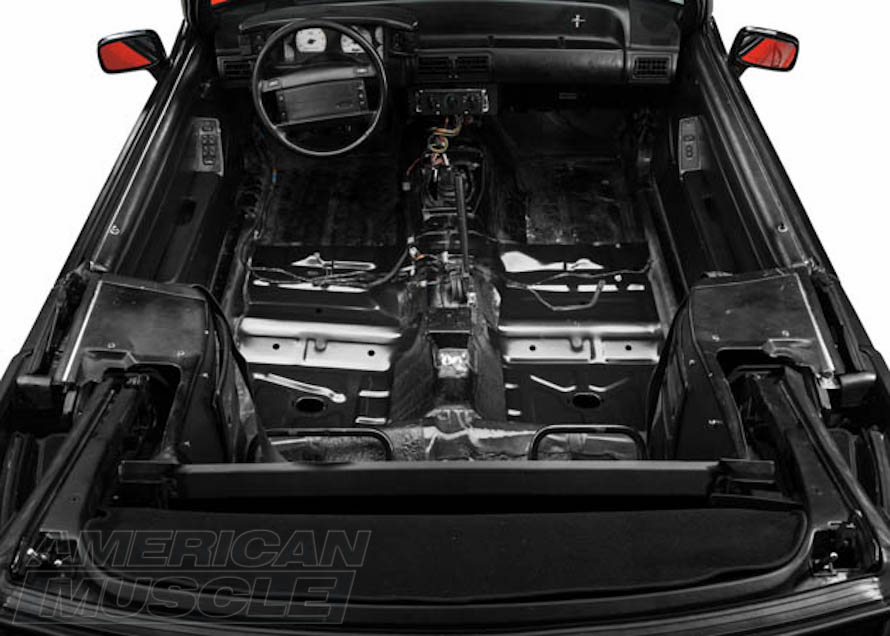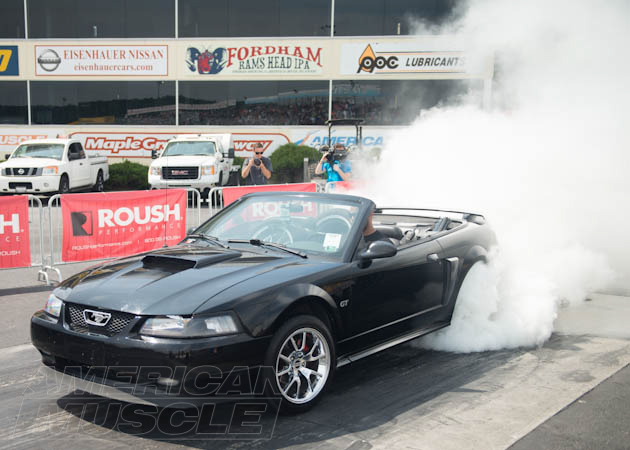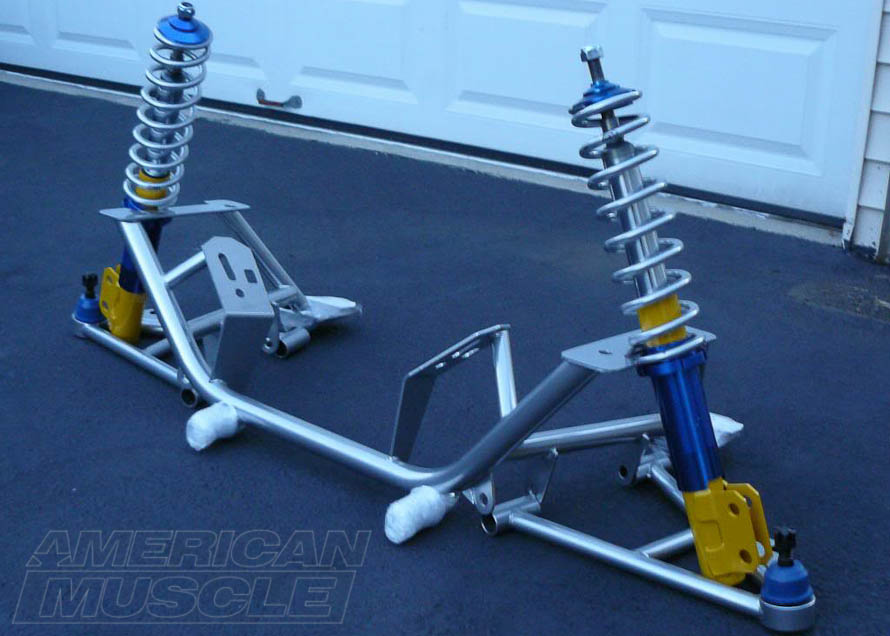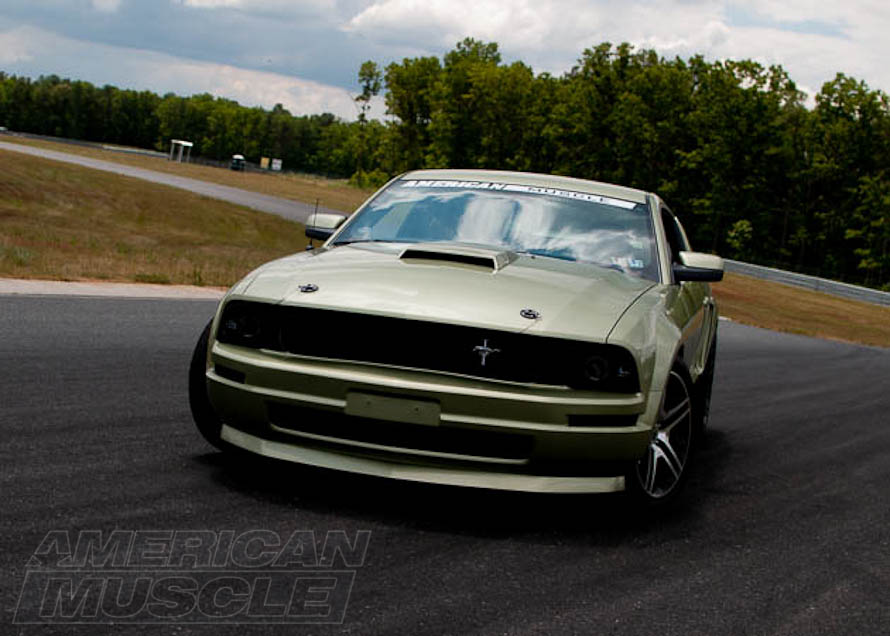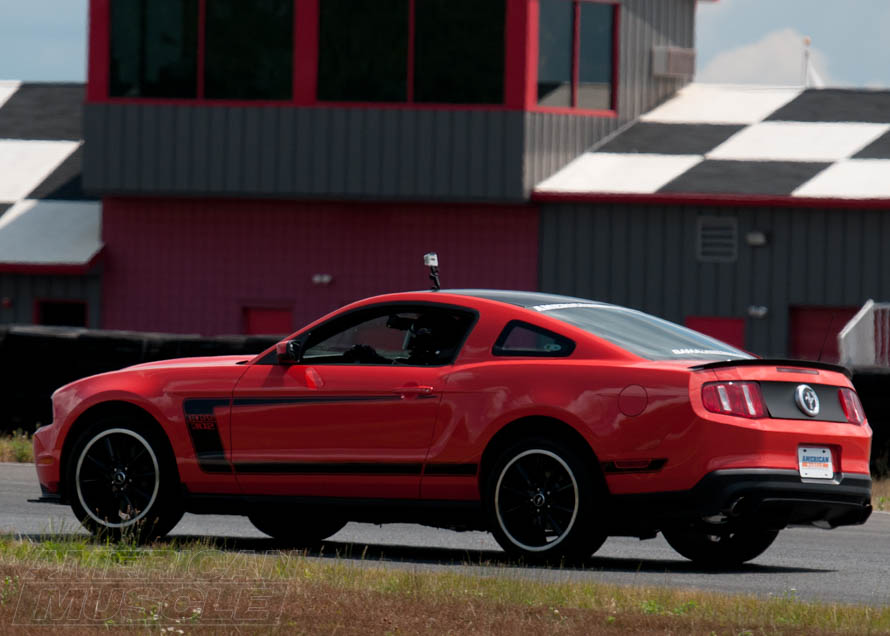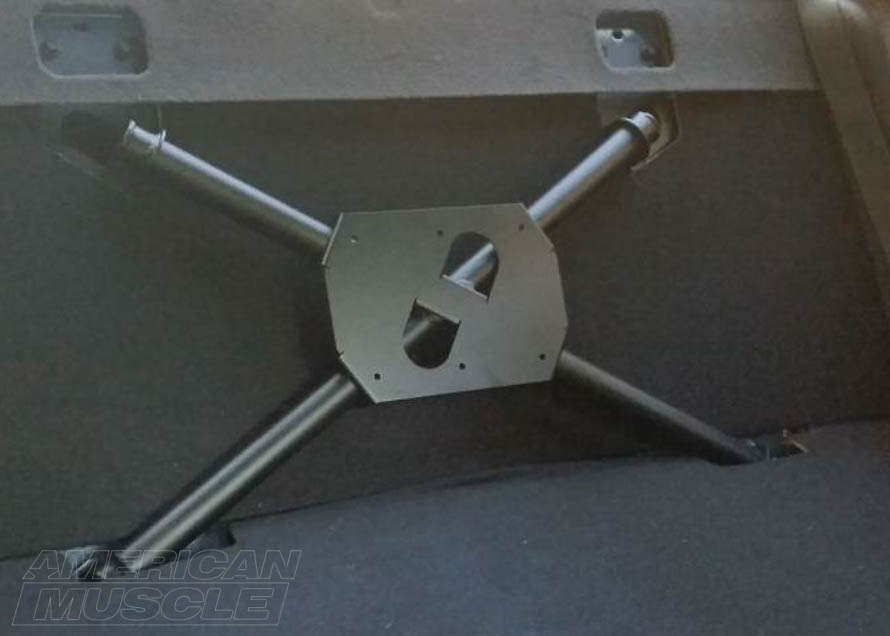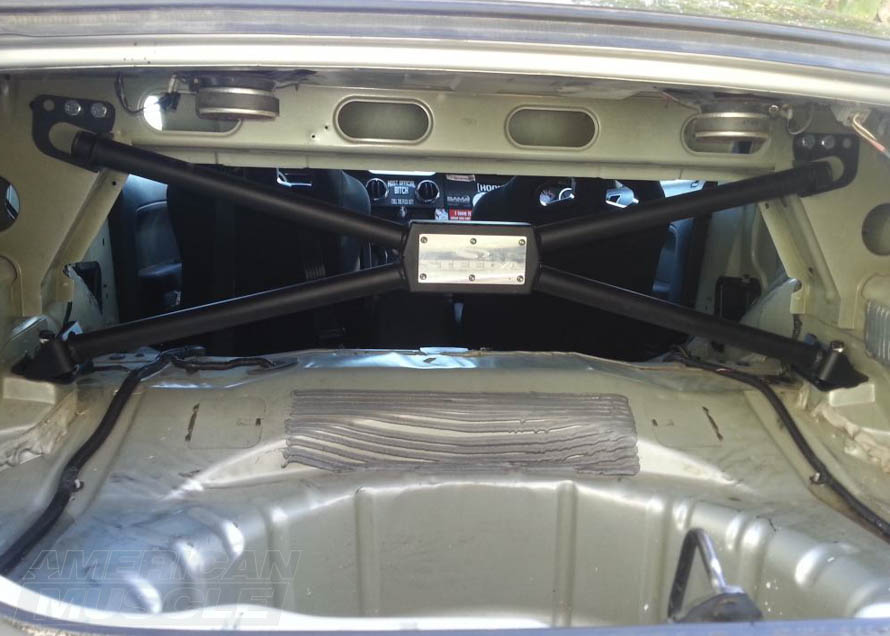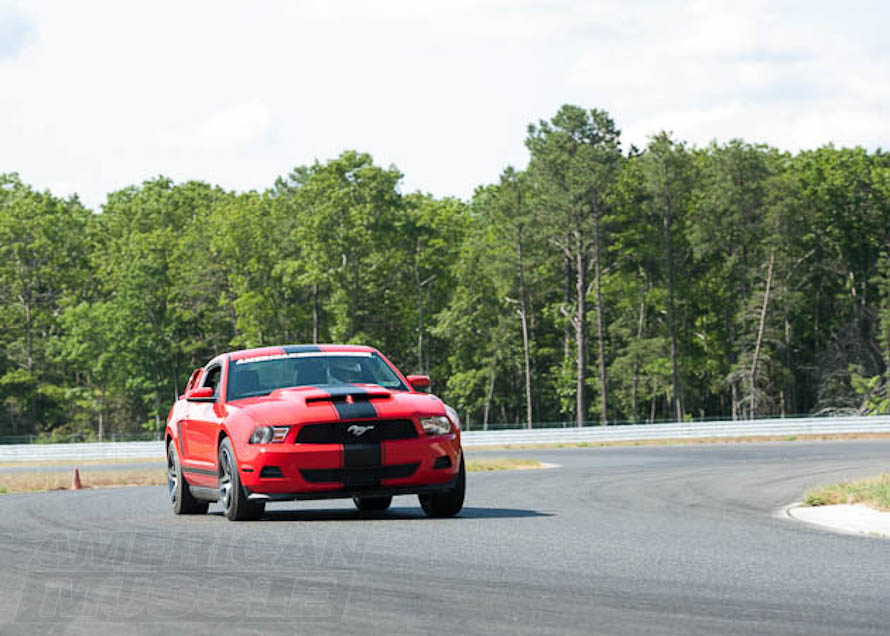Strengthening a Mustang's suspension means addressing known weaknesses within the unibody. Subframe connectors and/or tower braces are a must especially with power mods. Convertible Mustangs are especially prone to body flex. There are multiple ways to brace your pony, and we’ll explore those options below.
Shop Mustang Suspension
Gaining better acceleration and handling means having the proper supporting mods, and when it comes to suspension, none is more important than bracing your Mustang's chassis. Take the flex out of your stock ride and feel the drastic improvements that come with a well-supported frame.
Shop Suspension
The Mustang’s Uni-body Construction
Mustangs use what is called a uni-body design. This means the frame and body are a single combined unit. In a uni-body vehicle, the floor pan (the metal underside of the vehicle) is an integral part of the main structure to which all the mechanical components are attached. Alternatively, a body-on-frame design is where the body and mechanical components are attached directly to a ladder-style frame. Check out the two images below for comparison. The upside of the uni-body design is it’s lightweight. The downside is it’s not as rigid as a body-on-frame vehicle, so it can twist and flex more easily, resulting in poor handling and loss of drivetrain power. This problem can be easily solved with the help of added suspension mods like:
- Bolt-on subframe connectors
- Weld-in subframe connectors
- Strut tower braces
- Shock tower braces
- K-members
- X-Braces (2005-2014 Mustangs)
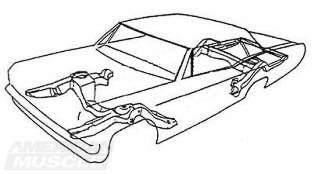
Uni-Body
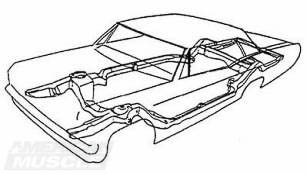
Body On Frame Chassis
Quick Subframe Connecting Facts
- Convertible Mustangs don’t have as much structural support as coupes
- Excessive body roll hampers your Mustang’s handling, and excessive torque numbers can twist the body to the point of cracking
- Subframe connectors support your Mustang’s chassis to improve cornering and handling
- Weld-in connectors provide more support than bolt-in ones, but they are more expensive
All Mustangs, convertible or not, greatly benefit in ride quality and handling from installing subframe connectors. Whether you daily drive a stock convertible or your car is a weekend cruiser, there is likely no better suspension mod you can do than install a set of subframe connectors. Mustang subframe connectors help to make your ride more rigid and stiff, cutting out and down on body roll in corners and off the line. Subframe connectors can come in a variety of styles from 3-point bars to x-braces in the rear seat. Additional chassis bracing helps control and even out weight transfer in turns.
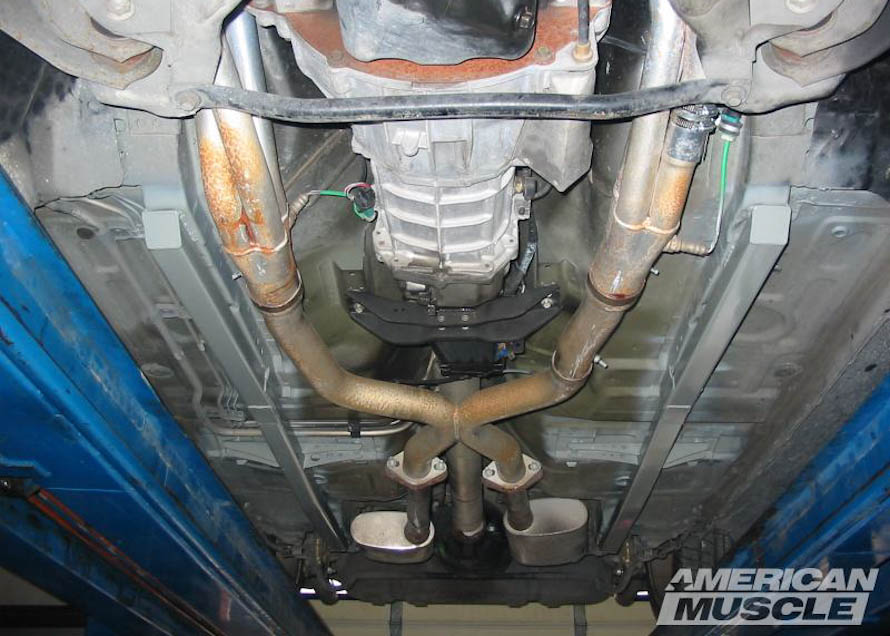
Painted Subframe Connectors Installed
Subframe Connectors - Bridging Front and Rear
Subframe connectors connect the front subframe (which houses the engine and front suspension components) to the rear subframe (which contains the rear suspension components) to create a full perimeter frame that increases the overall strength and rigidity of your Mustang. Subframe connectors also support the rear seat mounts, another common spot for cracking under too much flex. Even if you don’t use your Mustang for racing, taking care of chassis flex may be in your best interest since it improves your automobile’s longevity. Hard launches on the street over the years will twist the spot welded uni-body.
The difference between a braced chassis and a non-braced chassis is particularly evident when cornering since there is less load being distributed onto one tire. Better stability for the car as a whole during high speed turns. Plus additional confidence for the driver because of the full frame feel.
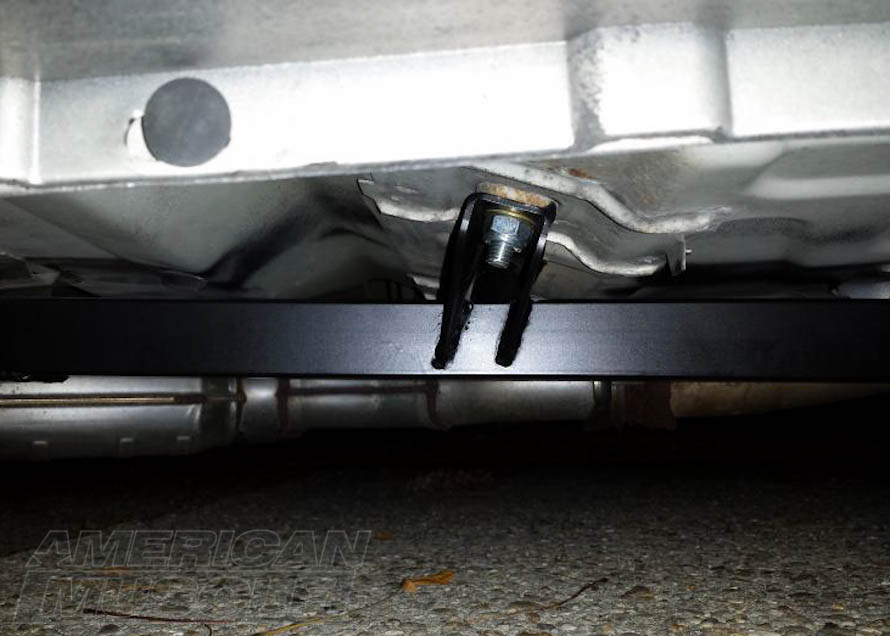
Bolt-On Subframe Connectors
Two Different Styles of Subframe Connectors
As mentioned above, there are two types of subframe connectors: bolt-on and weld-in. Bolt-on subframe connectors literally bolt into place, making them simple to install in just a couple of hours in your own driveway or garage with basic hand tools. Drilling may be required in some applications.
Weld-in subframe connectors on the other hand are much more difficult to install, requiring professional welding and in some cases removal of the interior carpet to prevent a fire. The benefits of the weld-in connectors is they become a permanent part of the vehicle’s chassis creating a much stronger structure with no mechanical fasteners that can fail.
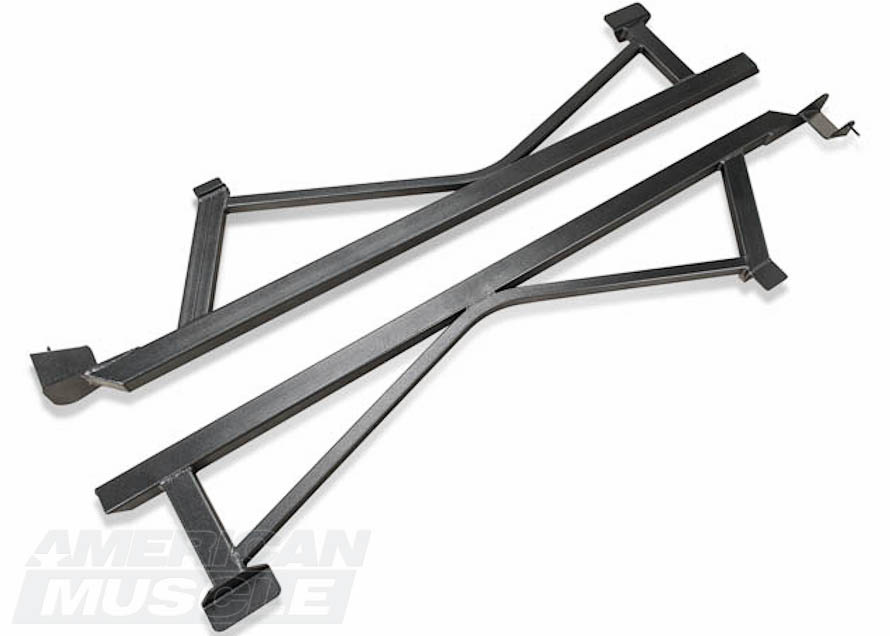
Weld-On Subframe Connectors
What's the Difference Between Convertibles and Coupes?
The obvious detail really makes all the difference. The lack of a roof on the convertibles reduces a Mustang’s overall rigidity, making them more prone to frame flexing. This is one of the reasons why subframe connectors are among the first modifications convertible Mustang owners go for. If you’re looking to run your convertible on a track (drag or road course), bracing the chassis is a must. If you’re looking for added spunk in your daily commute, a set of subframe connectors can make a huge difference on which roads you take into work.
2005-2014 Mustangs: Even though they come from the factory with connectors, the factory installed subframe connectors do not connect the front and rear of the unibody. Thus, the effects are minimal compared with full length connectors. It should be noted convertible S197 Mustangs will not accept typical subframe connectors. You will need to select a set specifically built for your convertible’s chassis.
How Does Flexing Effect Traction?
First off, let’s identify when flex happens. High powdered drag Mustangs are renowned for their torque numbers and abilities to twist severely enough to lift a front tire of the ground at a launch. This is an extreme example of frame flexing. On the opposite side of the spectrum, bumps and pot holes in public roads also cause a small amount of flex.
In the case of the dragster, having one tire off the ground obviously limits traction. But that’s the front tire, you say, and you’d be correct. As far as traction is concerned it’s the rear tires that have to harness your engine’s power. So let’s take this to the backroads. Let’s say you’re taking a hard corner in your convertible. Both body roll and a flexible body will make it harder for your tires to grab traction consistently. In an extreme case you might find yourself fishtailing because the continuously shifting weight is too much for the tires to handle.
NewArrivals
Strut Tower Braces - Making the Most of MacPherson
Another great way to eliminate unwanted chassis flex and body roll in a uni-body car equipped with a MacPherson style strut suspension is with a strut tower brace, also known as a strut bar. The MacPherson style strut suspension used on some Mustangs features a spring and strut/shock absorber that is bolted into the top of the inner wheel well, known as a strut/shock tower. The issue with this design is the strut towers are not directly connected to the main chassis rails, which results in suspension and body flex, especially during spirited driving. A strut tower brace is designed to reduce this excessive flex by connecting the two parallel strut towers together, front or rear. This transfers the load between the two towers during cornering to reduce chassis twist and flex.
There are two types of tower braces: strut tower and shock tower. A strut tower brace is designed to connect your front strut towers together and installs in your Mustangs engine compartment in less than an hour with basic hand tools. A shock tower brace is basically the same as a strut tower brace, only it’s designed to connect the rear shock towers together. It normally mounts in your Mustang’s trunk or hatchback, depending on application.
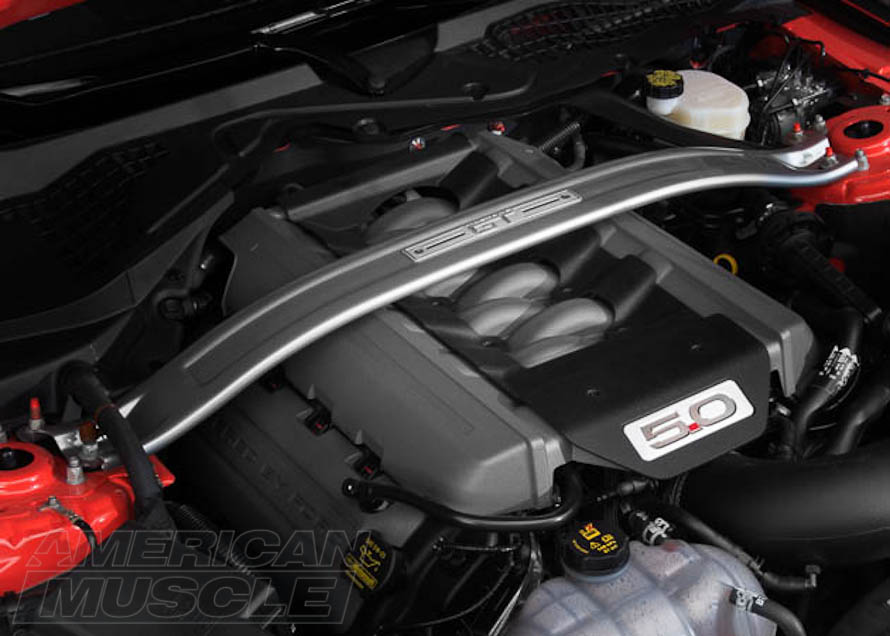
GT with a Strut Tower Brace
What is a K-Member?
A K-member is part of the chassis of the car and holds almost the entire front end together. It’s the part that holds your engine, steering rack, and control arms, which connect to your spindles and essentially holds your entire front suspension together. When buying a new K-member there are some things to consider:
- Material choice
- Cost
- Purpose
- Wheel location
- Motor mounts
- Suspension
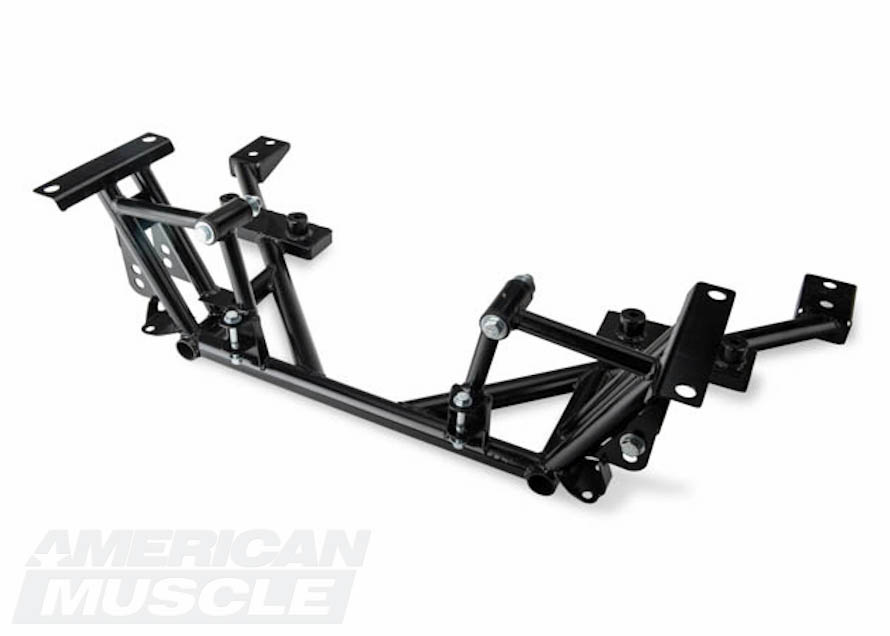
K-Member
Bent Steel vs. Chromoly K-Members
There are two different types of material aftermarket K-members are made from. One is a mild steel blend and the other is chromoly. The main differences are weight and strength. Chromoly is stronger and weighs less than mild steel, but at a bigger price point. To figure out which material you would like to go with, you should determine the main purpose of your vehicle. For a weekend toy, you may want to go with the mild steel option to save some money. Also, mild steel has a better ability to flex under pressure, which may be more comfortable for daily driving. While the chromoly is stronger, it will add a very slight bit of harshness to the ride, but some enthusiast said the difference was unnoticeable.
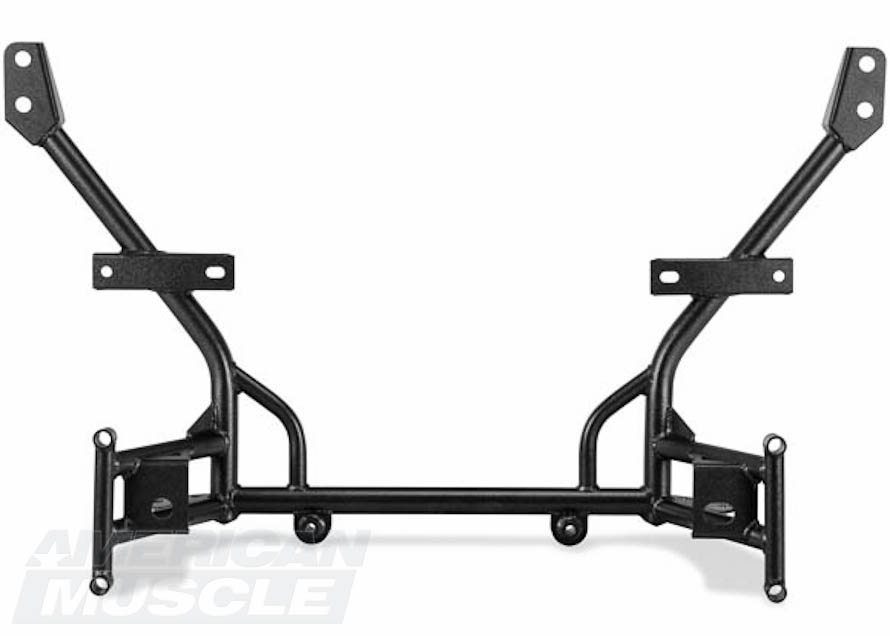
Chromoly K-Member
Other Mods You Might Need with a K-Member
One of the most common questions asked by people in the market for a new K-member is whether or not they will need to switch to a coil over suspension instead of a conventional spring and strut design. Some kits require the switch to coil over suspension, while others offer spring perches to maintain the same orientation of their current front springs. If you want to keep your conventional spring setup, then you might have to purchase spring perches. Some K-Member kits also include adjustable control arms for added suspension manipulation.
Adjusting Your Wheel Location with a K-Member
Some front end kits alter the location of the wheels. Moving the position of the front wheels forward can be considered a benefit, but the amount it’s moved is so minute the benefits could be minimal. There are kits that offer the same wheel location as stock and will still allow for fitment of far more wheel packages than an altered wheelbase would.
Most of the K-members that alter the wheelbase aim to improve the balance and reaction of the vehicle. Also, this will help with aligning the front end when using smaller width wheels for drag racing since it aids in keeping the wheels within the factory limits. A lengthened wheelbase would improve weight distribution and prevent a little bit of brake diving. The reason behind this is because the engine is located slightly further behind the wheels than before.
Motor Mounts and K-Members
Another thing to consider is what motor mounts you plan on using. Your options are either solid or urethane motor mounts. Certain K-members only allow the use of solid motor mounts. Solid motor mounts will give you added durability, but on the downside they will make the ride a bit more harsh since there are no bushings in solid motor mounts to absorb the vibrations from the engine. Solid motor mounts are more commonly found on cars built for the track.
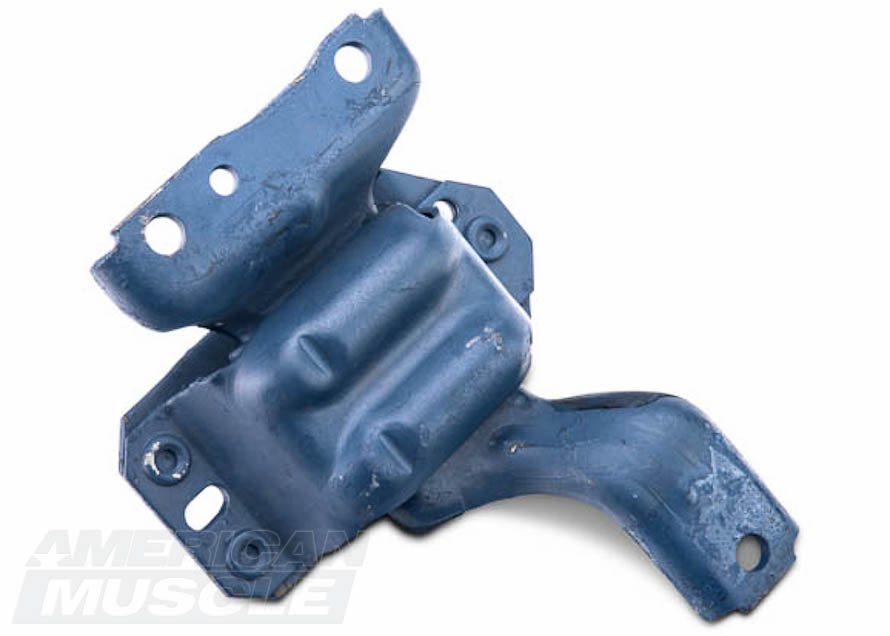
Motor Mount
What is a Mustang X-Brace?
A Mustang X-brace is a simple bolt-in suspension component that is a metal shaped X, connecting your passenger and driver side of your chassis. Our X-braces are available for 2005-2014 Mustangs. Most designs replace your rear seats and is exposed in the cabin. However some versions bolt in behind the rear seats, in the trunk area, producing the same results. X-braces can offer a variety of performance benefits to your Mustang such as:
- Reduced chassis flex
- Improved handling
- Weight reduction
Aside from reducing weight and improving the handling characteristics of your Mustang, X-braces also add a more racecar inspired look.
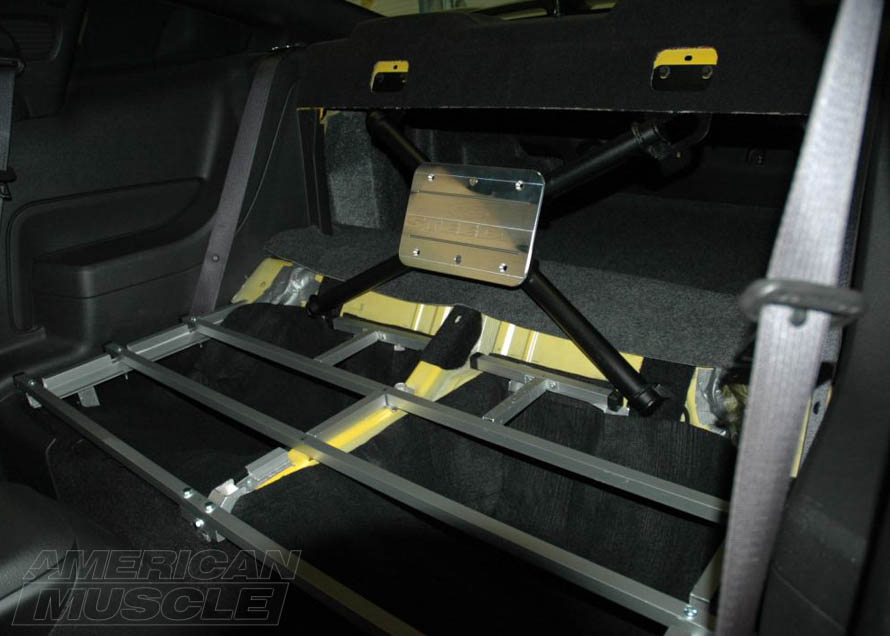
Rear Seat X-Brace Installed
What Mustangs Have an X-Brace from the Factory?
Some Mustangs have come straight from Ford with an X-brace installed. Ford’s more “track focused” Mustangs have used X-braces in their design as even Ford recognizes the benefits of the modification.
The 2012 and 2013 Boss 302 Laguna Seca was the first Mustang to feature an X-brace and it made the mod popular with S197 enthusiasts as it integrated seamlessly into the interior with a seat delete panel. The 2015 Shelby GT350R had its rear seats deleted from the factory with a seat delete panel, but it is an option to have an X-brace added in.
How X-Braces Effect a Mustang's Handling
X-braces increase chassis rigidity by adding another point of connection in your Mustang. The design of the X-brace provides a central point at the middle of the X that eliminates body roll, making the front and rear of the car feel more connected. The added suspension strength keeps the car flat coming off of the line as well as when you take a turn. The reinforcement added by the X-brace absorbs the energy that travels through the suspension, making it a night and day difference in how your Mustang reacts in a turn or from the power coming off of the line.
How Mustang X-Braces Reduce Weight
Aside from the handling benefits outlined above, X-braces also improve the performance of your Mustang by reducing weight. Almost all of the current and popular designs available on the market replace your rear seats, cutting out “unnecessary” weight from your pony.
Removing the seats from your Mustang and replacing them with an X-brace allows you to accelerate faster and handle more nimbly. Granted, the total amount of dropped weight is not a large amount, but it does make a difference nonetheless.
Mustang Torque Box Braces
A crucial area to address for drag racers launching at higher RPMs is the rear torque box. This area catches the brunt of a hard launch, receiving a lot of stress from the axle, especially if the rest of the chassis is stiffened up already.
There are several options to choose from in regards to torque box braces. Some are smaller braces that weld in place, while others are larger and can tie the torque box area into the frame rail. You can choose between bolt-on options and those that are intended to be welded. As with the subframe connectors, welding the braces will yield advantages when it comes to strength.
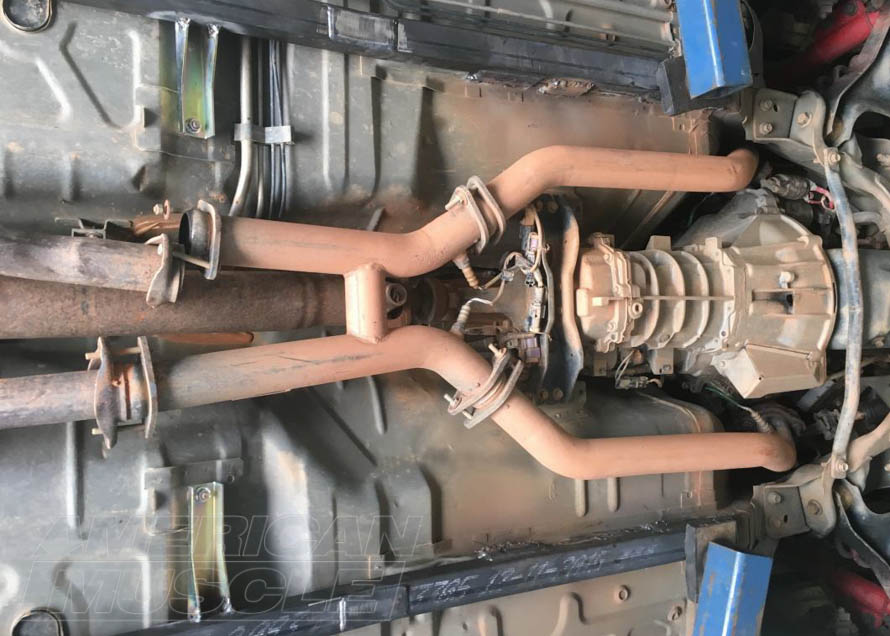
Full Length, Weld-In Subframe Connectors
Mustang Roll Bar/Roll Cage
If you want to look into the ultimate way to stiffen up your Mustang, as well as provide a safer place for the driver, look towards a roll bar or roll cage. You can get a simple 4-point bar for the rear of the Mustang, or elect to get a full cage to offer substantial protection and chassis stiffening. As with many other suspension components, you can get roll cages that bolt in place, or that require welding. Depending upon how fast your car is, some tracks may require a certain type of roll bar or roll cage. If you have dragstrip goals in mind, plan ahead. It's easier to do it right the first time than to do it multiple times. Note that for convertibles, a light bar does not fall into this category. It is merely a cosmetic feature.
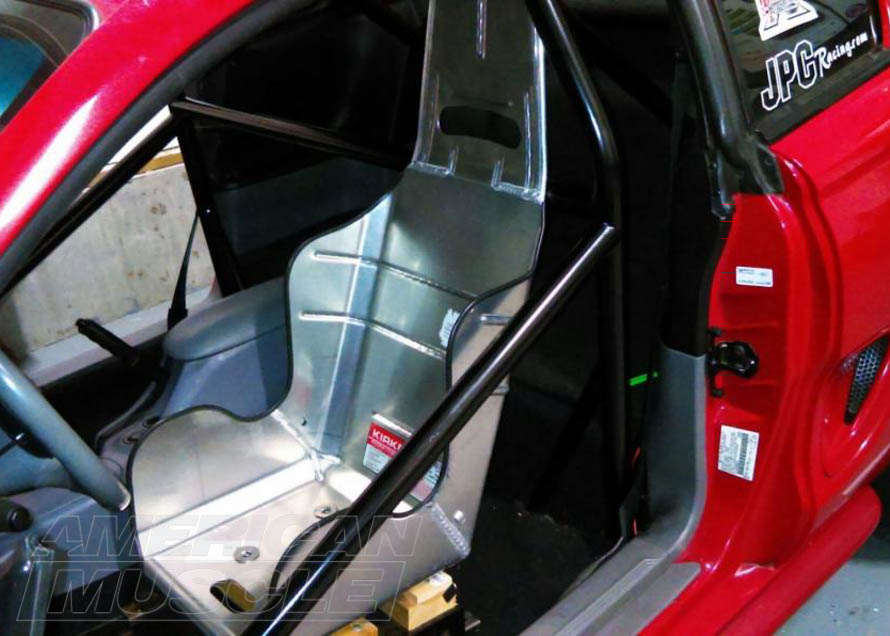
8-Point Roll Cage
How Else Can I Stiffen My Mustang?
If you're thinking about taking your convertible to the track, there are more ways to brace your Mustang's chassis. Sway bars add frame support and also help with oversteer and understeer. A full on race Mustang should also consider a roll cage. Another option is adding a torque arm. A torque arm eliminates wheel hop off the line and cuts down 60ft times. You’ll also see improved handling while cornering and taking turns. Installing a torque arm may require subframe connectors and/or other suspension modifications to the car, so be aware of any requirements before choosing a toque arm that’s right for you.
Fitment includes: 1979, 1980, 1981, 1982, 1983, 1984, 1985, 1986, 1987, 1988, 1989, 1990, 1991, 1992, 1993, 1994, 1995, 1996, 1997, 1998, 1999, 2000, 2001, 2002, 2003, 2004, 2005, 2006, 2007, 2008, 2009, 2010, 2011, 2012, 2013, 2014, 2015, 2016, 2017, 2018, 2019, GT, V6, Cobra, ShelbyGT500, Mach1, Bullitt, Boss, LX, SVO, EcoBoost, ShelbyGT350
TopSellers







